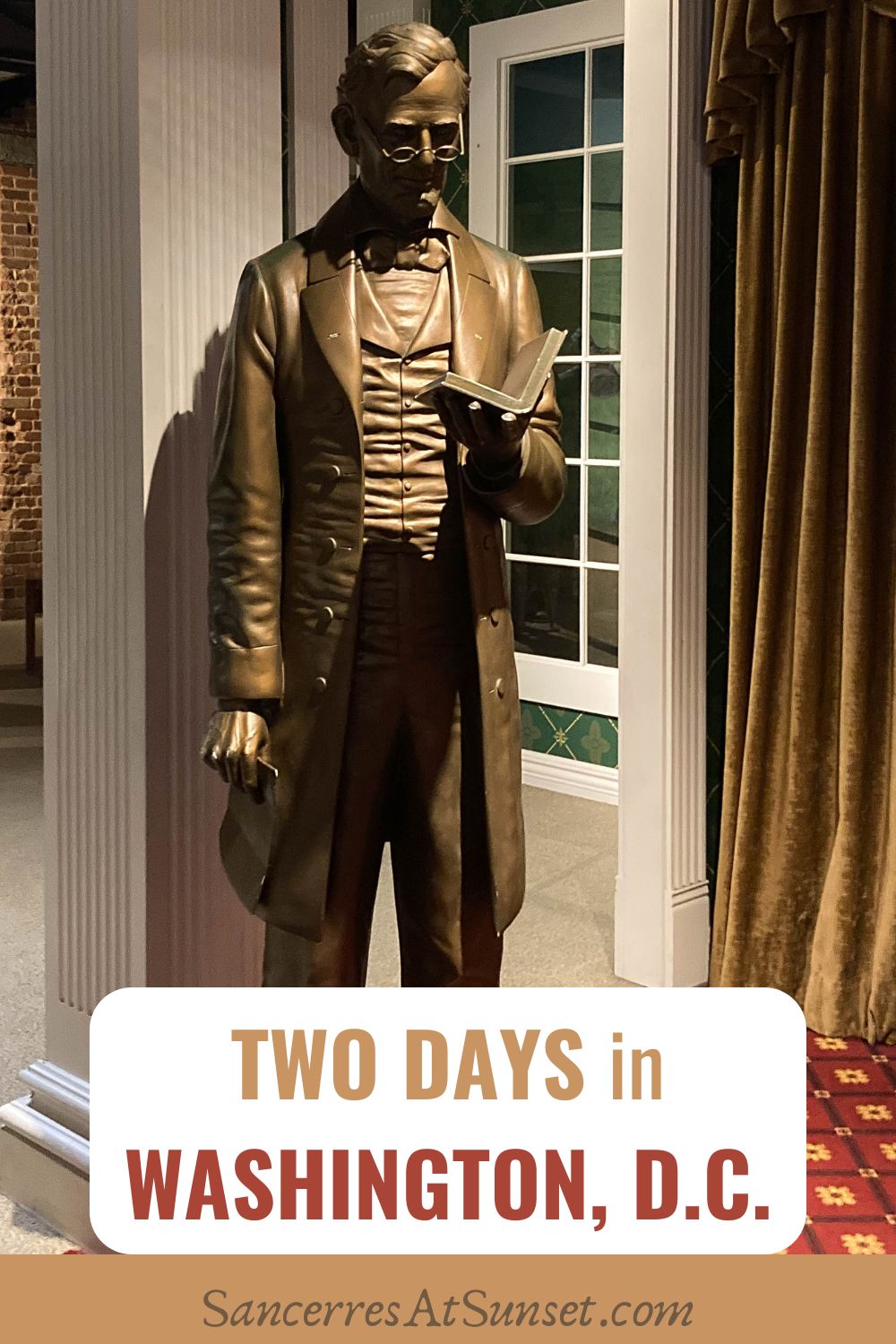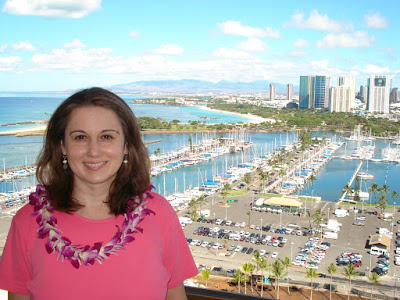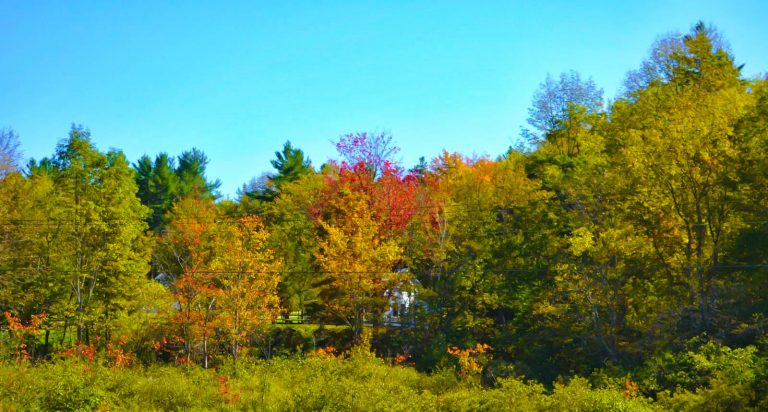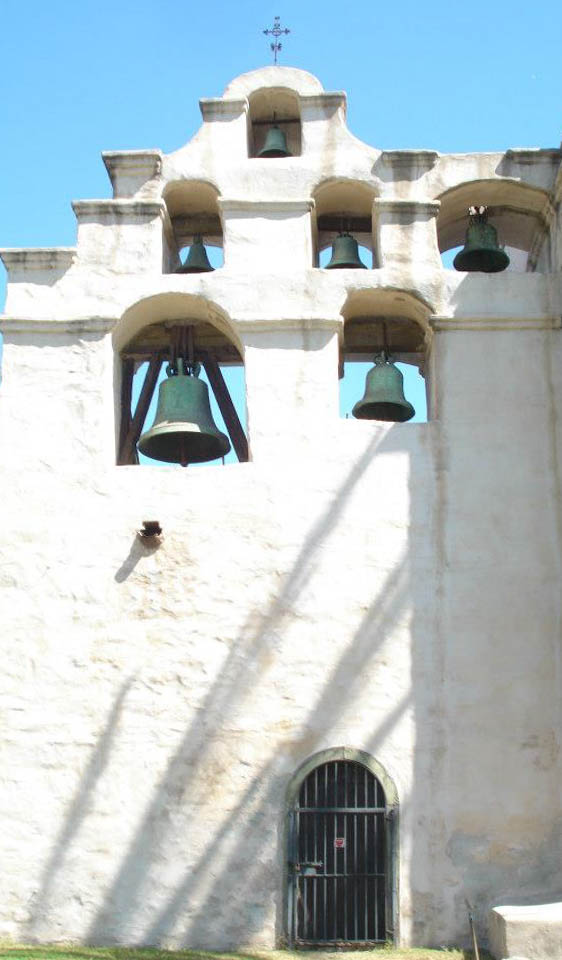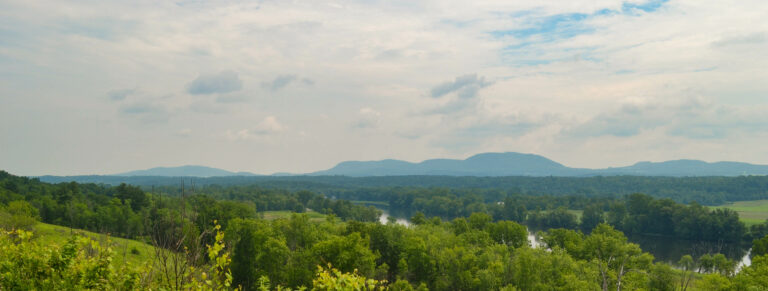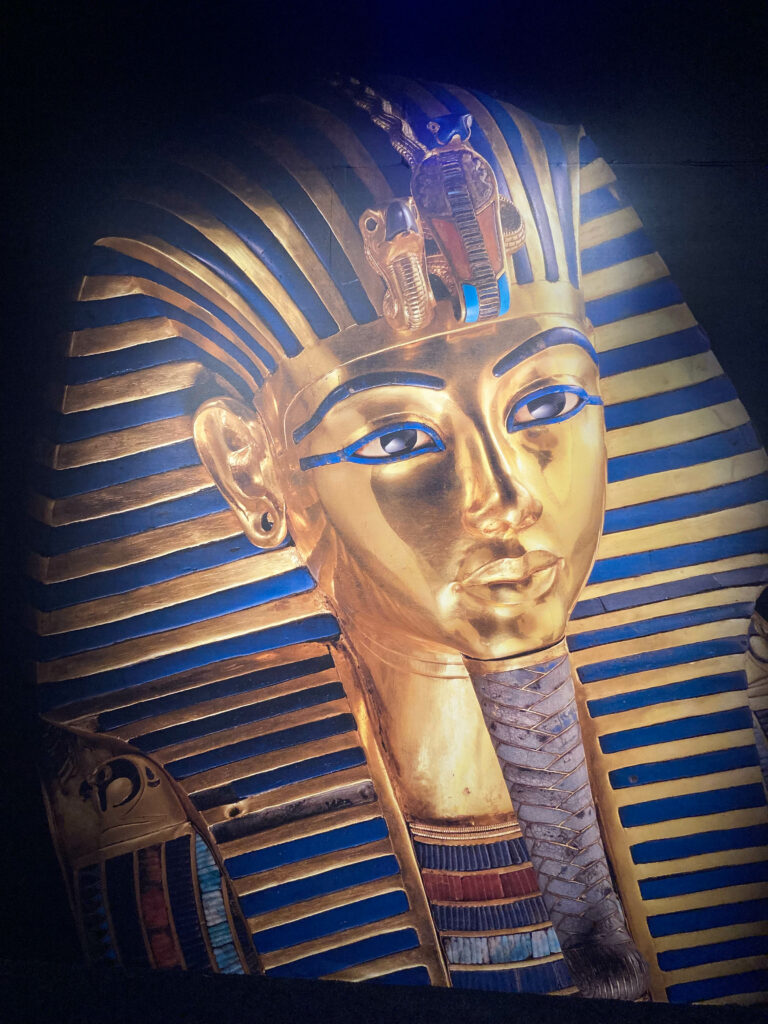Two Days in Washington, D.C.
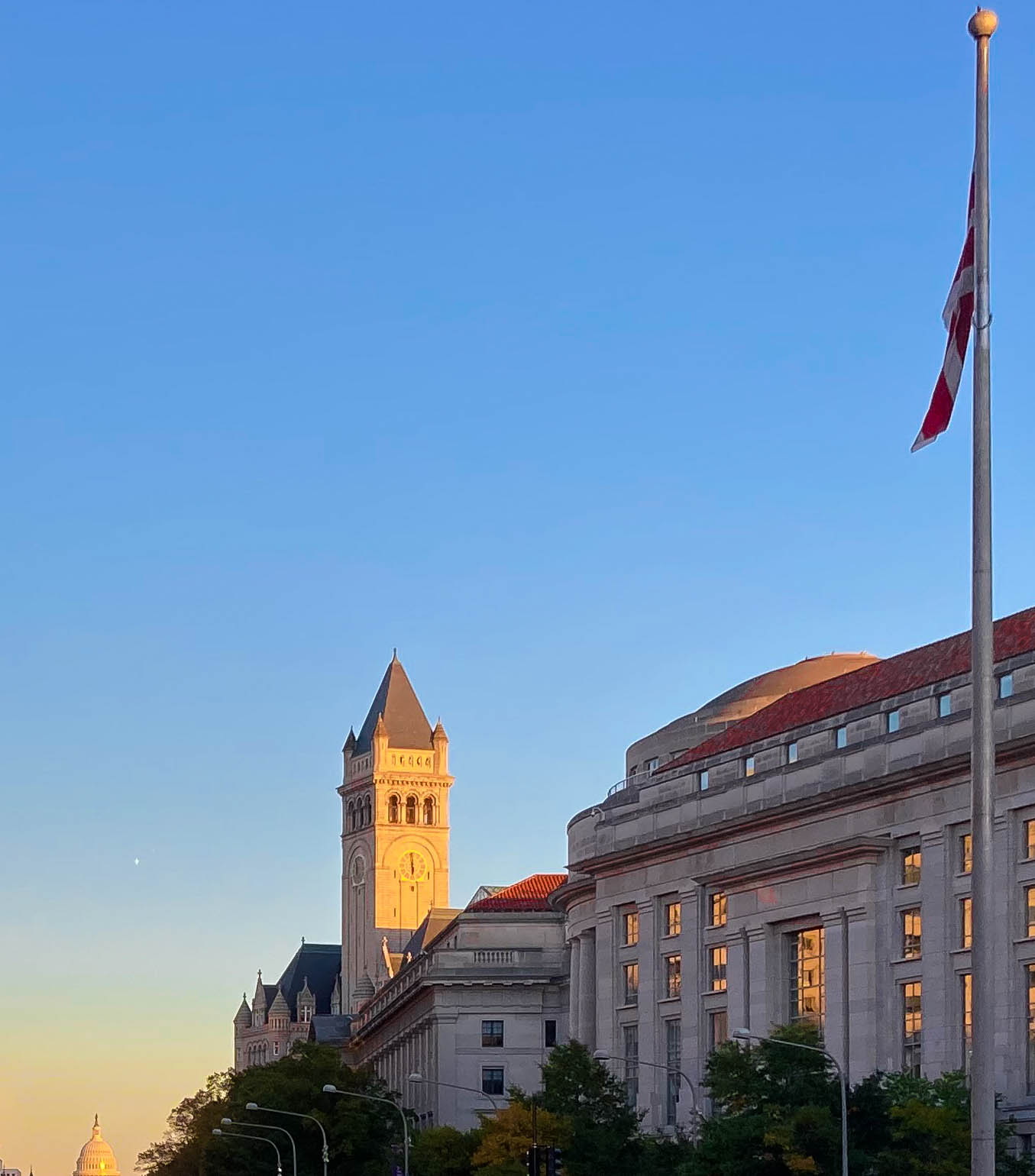
Washington, D.C., bursts with iconic monuments and fabulous museums. I’ve lived in or near our nation’s capital off and on since college, and there’s still plenty left for me to explore. So when a family member recently came to town for a brief visit, I was happy to (re)discover the sites that make the world’s most powerful city also one of its most unique.
Day One
Bureau of Engraving and Printing
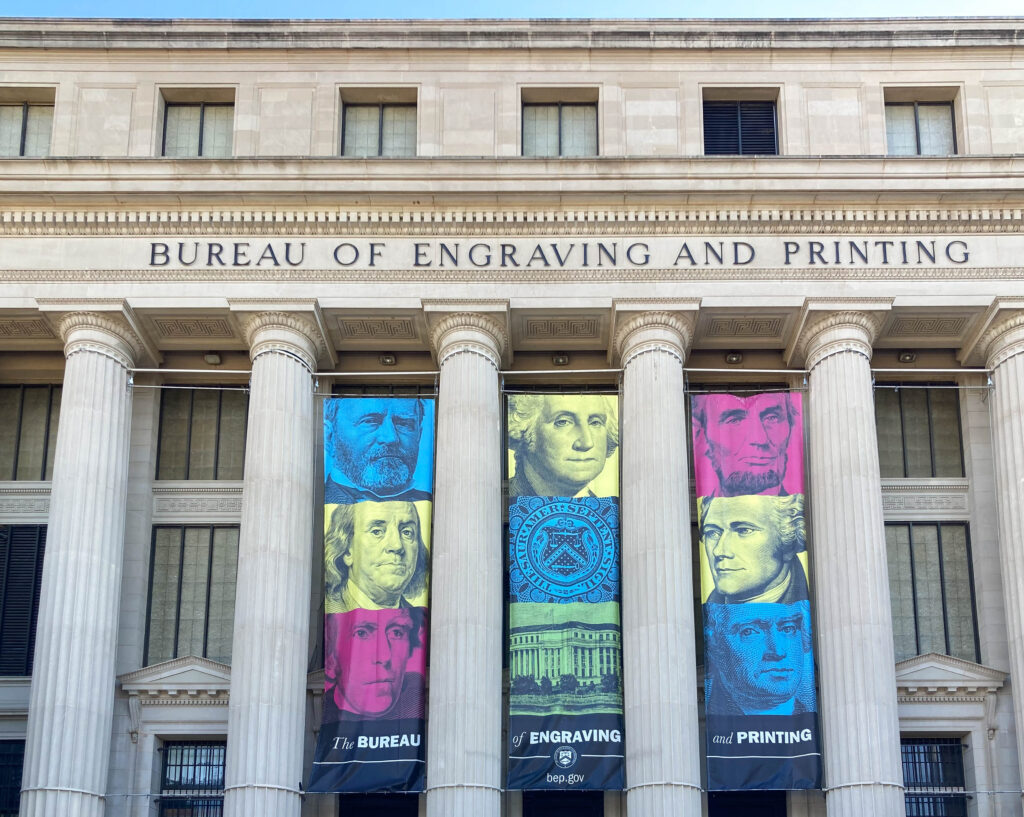
We began our first day at the Bureau of Engraving and Printing, where the U.S. Department of the Treasury makes paper money. There’s a fun 45-minute tour where you get to watch from above while people on the job produce our currency. There’s also a short introductory video and a visitor center with artifacts and displays about the history of American currency.
National Air and Space Museum
We headed over to the National Mall and the Smithsonian’s National Air and Space Museum. The main building houses a wonderful collection of historic aircraft, spacecraft, and artifacts that tell the story of aviation and space exploration from its humble beginnings to its latest achievements.
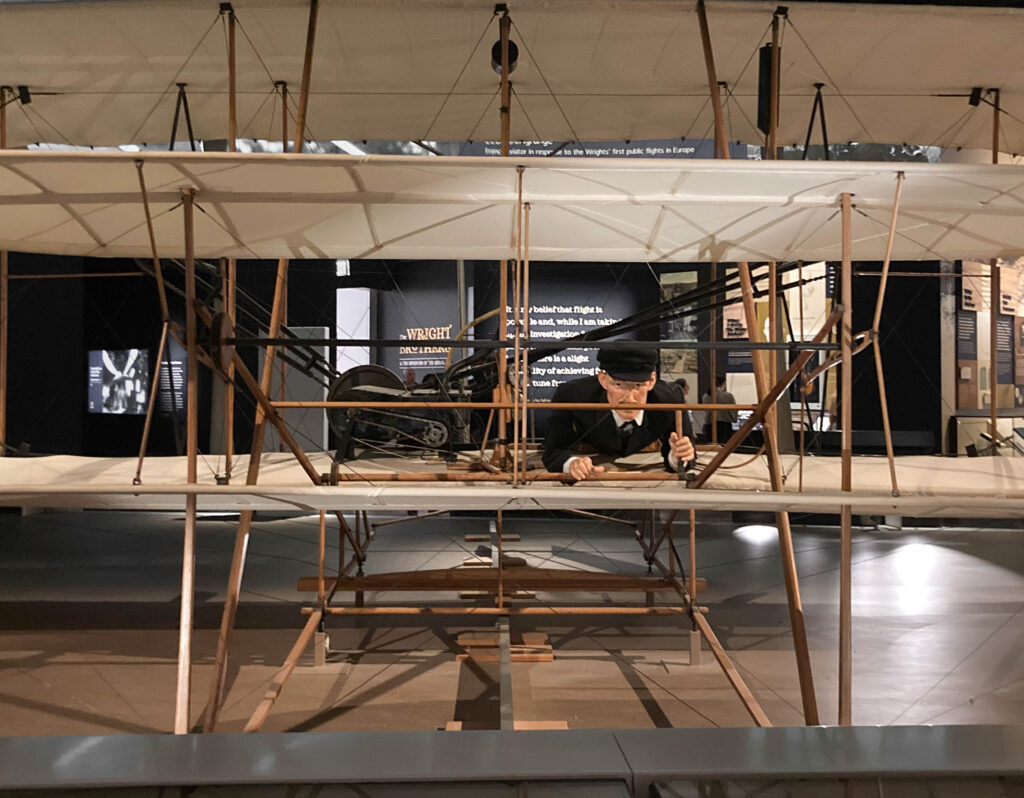
Highlights include a Wright Flyer, the Apollo 11 command module Columbia, and Neil Armstrong’s spacesuit.
As of this writing, the NASM is undergoing renovations. Approximately half the Museum is open to the public.
National Gallery of Art
We crossed the Mall to one of my favorite museums. The National Gallery of Art is home to a vast collection of masterpieces spanning centuries.
This post contains affiliate links. For more information, click here.
Garden Café
We started with lunch at the fast-casual Garden Café. I ordered a crustless quiche, which was delicious, although dwarfed by the backyard of arugula (and one rogue radicchio leaf) that filled most of the plate.
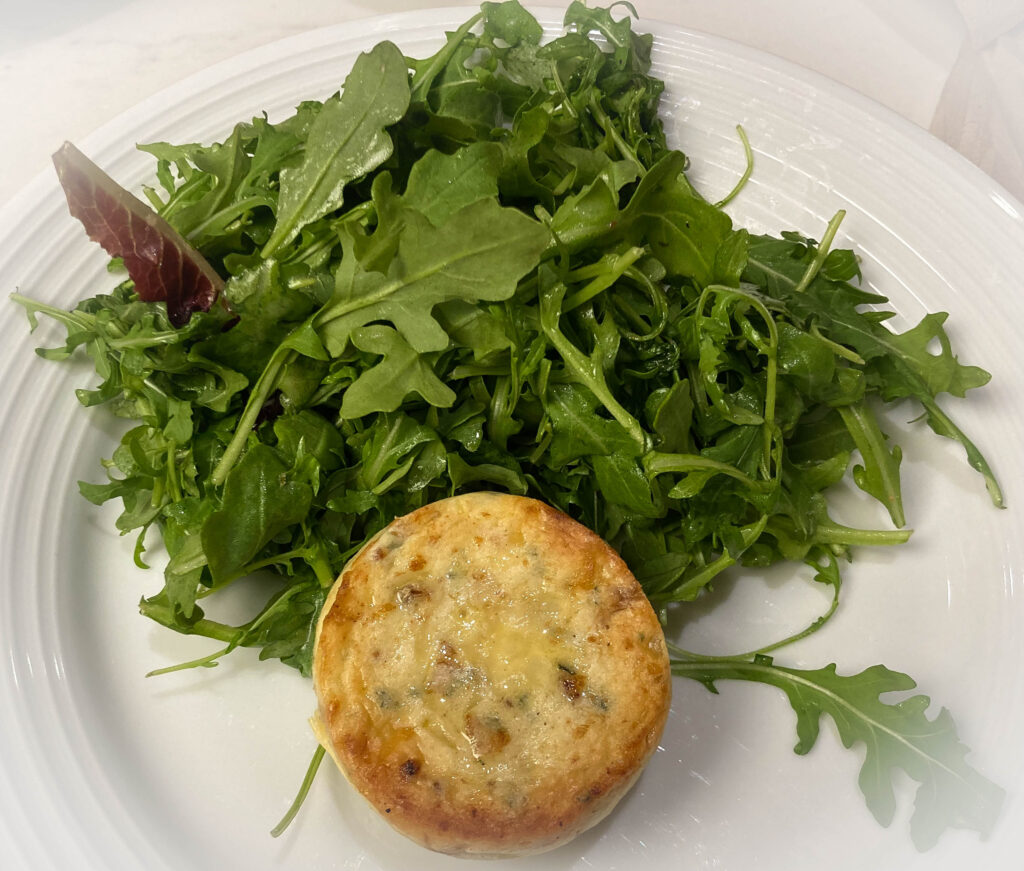
Paris 1874: the Impressionist Moment
Partially sated, we started exploring one of the NGA’s special exhibitions — Paris 1874: the Impressionist Moment.
1874 was a pivotal year for art in Paris.
The Paris Salon was the most influential art exhibition in the Western world. Beginning in 1667, it brought together magnificent works in classical styles. Hundreds of thousands of people came to see them.
But the Salon refused to exhibit more innovative works. It rejected artists like Edgar Degas, Claude Monet, and Auguste Renoir.
So in 1874, these artists and others held their own exhibition, featuring 200 works in avant-garde styles.
It was a flop. Only a few thousand people showed up. Few bought anything. Critics were harsh.
But the artists persevered, held more exhibitions over the years, and became known as the Impressionists.
Some of the hallmarks of Impressionism are nature scenes, depictions of ordinary life, vibrant colors, and visible brushstrokes.
“Paris 1874: the Impressionist Moment” marks the 150th birthday of Impressionism. It was curated in partnership with the Musée d’Orsay and features 130 works of well- and lesser-known Impressionists.
I think my favorite was Monet’s Fishing Boats Leaving the Harbor, Le Havre.
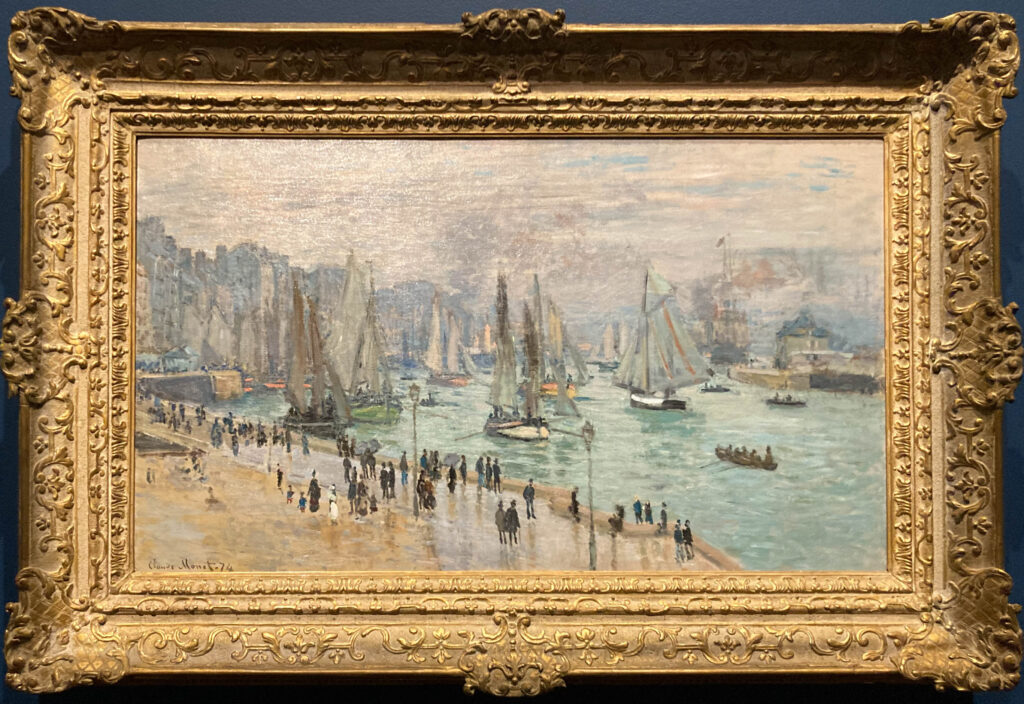
But it’s a tough choice.
The exhibition runs through January 2025. It was crowded when we went on a Wednesday afternoon, but there was no wait to get in.
17th-Century Dutch and Flemish Paintings
Next we explored the NGA’s extensive collection of 17th-century Dutch and Flemish paintings.
The 16th century was an eventful time. Explorers sailed the globe, claiming western lands for European powers. Martin Luther set off the Protestant Reformation by nailing his 95 theses to the door of the chapel at Wittenburg Castle in Germany in 1517. And the Dutch Republic declared its independence from Spain in 1581.
Dutchmen formed the Dutch East India Company in 1602, one of the first publicly traded corporations in the world. In 1621, they formed the Dutch West India Company. These corporations helped make the Dutch Republic wealthy through global trade.
And this newfound wealth led to a proliferation of Dutch painting that moved away from the ornate grandeur of Baroque art. The simpler style emphasized landscapes, marine scenes, still lifes, and historical depictions. The NGA collection includes more than 150 of these works, by artists like Rembrant and Vermeer.
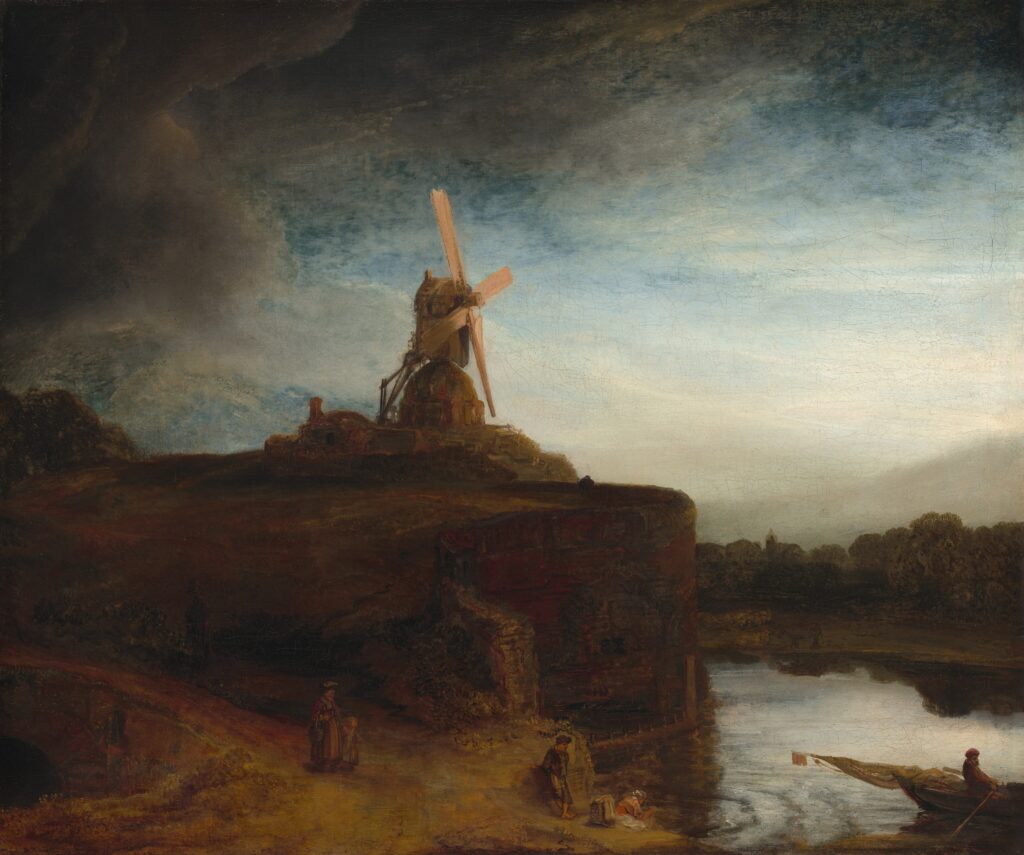
As usual, I can’t decide which is my favorite, but a prime contender is Rembrandt’s haunting The Mill.
Italian Renaissance Paintings and Sculptures
Our final stop at the NGA was the recently renovated 13th- to 16th-century Italian galleries, which house the NGA’s pride and joy: Leonardo da Vinci‘s magnificent Ginevra de’ Benci.
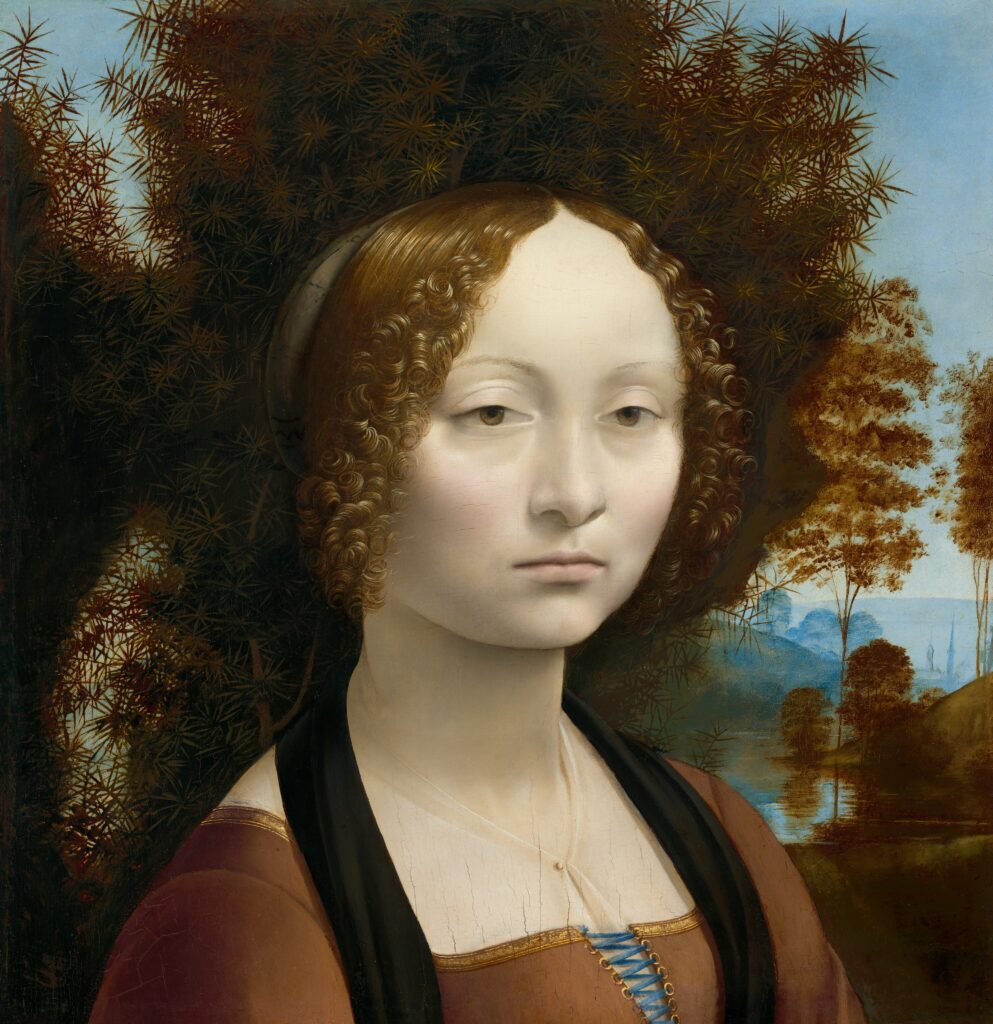
It is the first of the artist’s four portraits of women. Her inscrutable expression heralds his better-known Mona Lisa.
World War I Memorial
We headed to Pershing Park and the new World War I Memorial. The Memorial’s centerpiece is a startlingly realistic bronze sculpture depicting “A Soldier’s Journey” through the Great War.
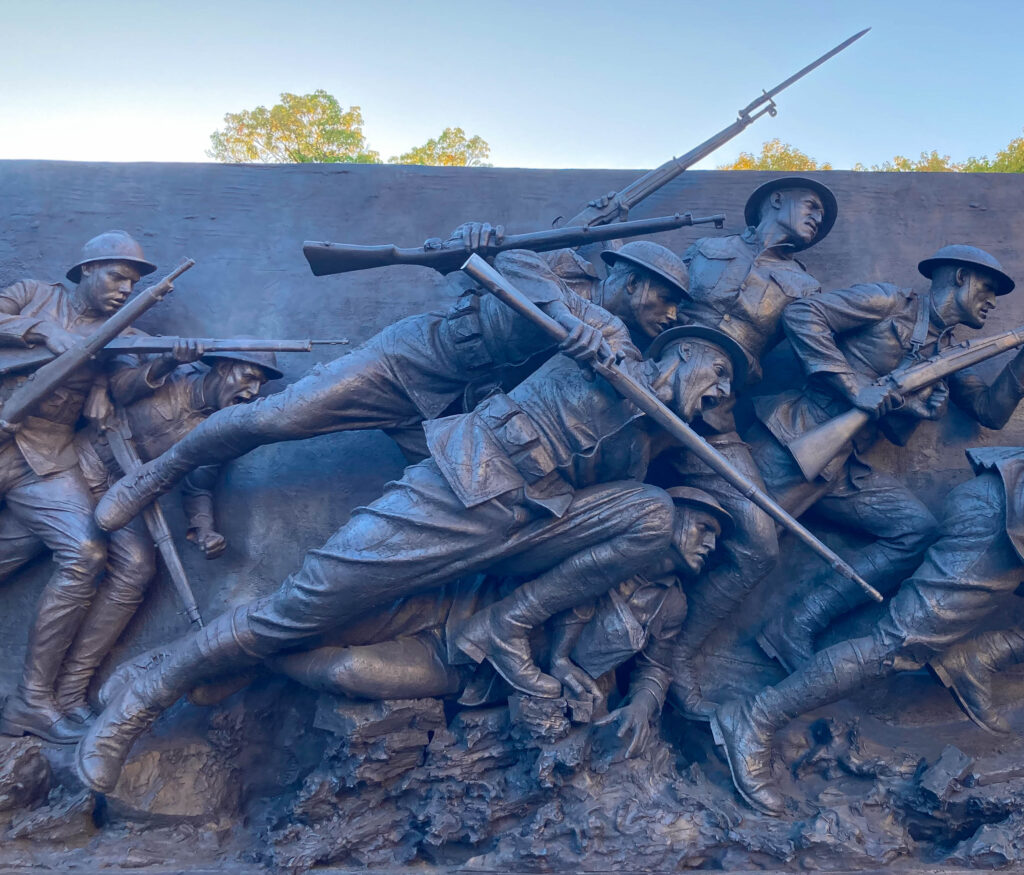
It begins with the figure saying good-bye to his daughter, follows him through the horrors of war, and ends with his reunion with her. It is surrounded by a pool of water with an elevated viewing platform.
The Memorial also features a statue of U.S. Army Gen. John J. Pershing, who commanded the American Expeditionary Force during World War I, and a wall showing battle maps from the War.
Round Robin Bar at the Willard InterContinental

The World War I Memorial is just across from my favorite hotel in Washington. The Willard InterContinental boasts a fabulous history: Julia Ward Howe wrote “Battle Hymn of the Republic” there, and President Ulysses S. Grant drank whiskey and smoked cigars in its lobby. So after such a full and fascinating day, we stopped in to its historic Round Robin Bar to relax over drinks.
Day Two
“Bond in Motion” at the International Spy Museum
We started our second day at the International Spy Museum, where “Bond in Motion” is a special exhibit with 17 vehicles from James Bond films.
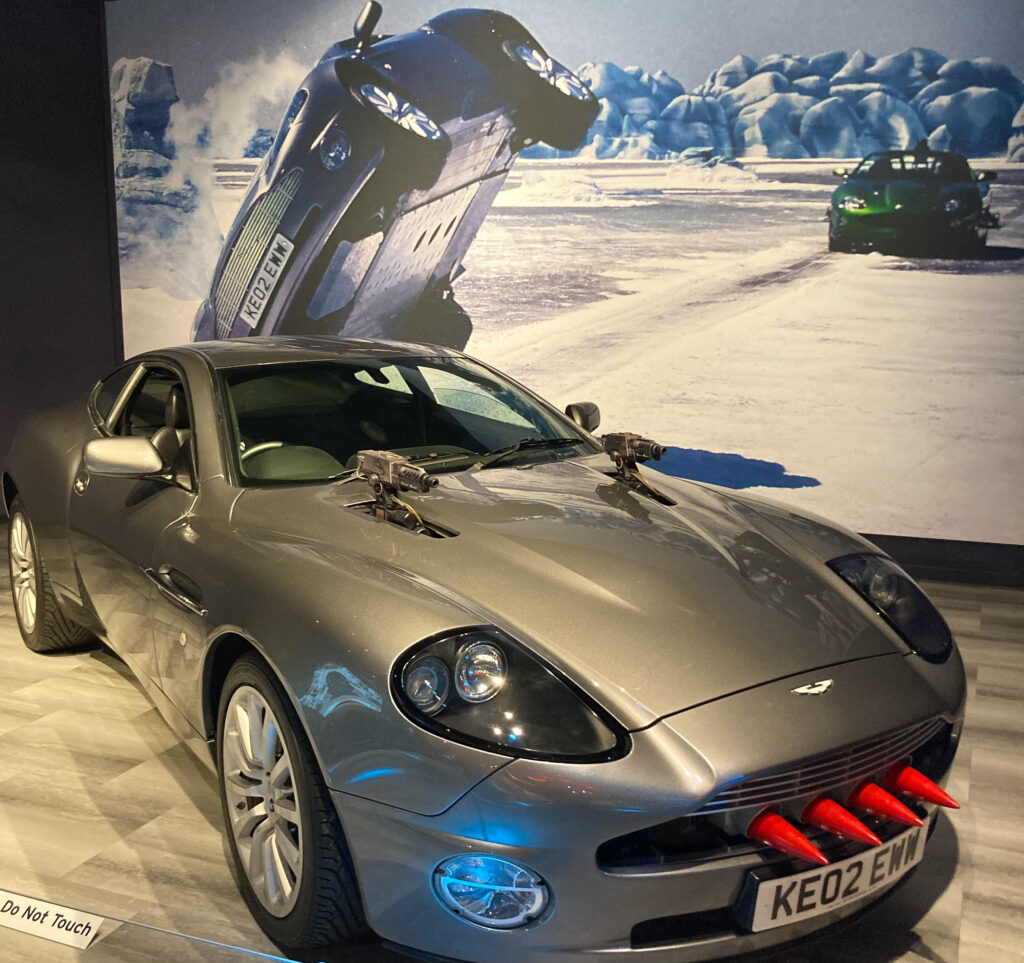
There are also some props and models and a few fun games. It’s a stand-alone exhibit with separate tickets, meaning you don’t have to pay full admission for the Museum. The exhibit is open through April 2025.
Enid A. Haupt Garden
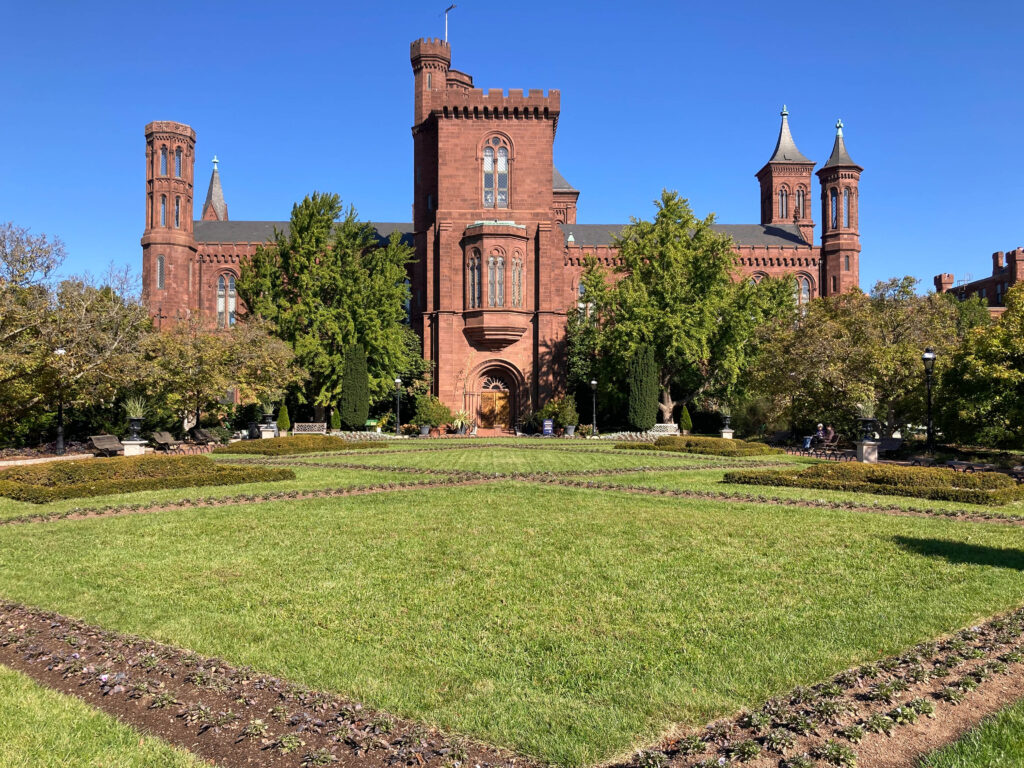
We headed back to the National Mall and crossed through the Enid A. Haupt Garden, a magnificently manicured oasis behind the Smithsonian Castle. I used to stroll its brick pathways before my photography classes at the Smithsonian.
Ford’s Theatre
Our next main stop was Ford’s Theatre, where John Wilkes Booth fatally shot President Abraham Lincoln on April 14, 1865.
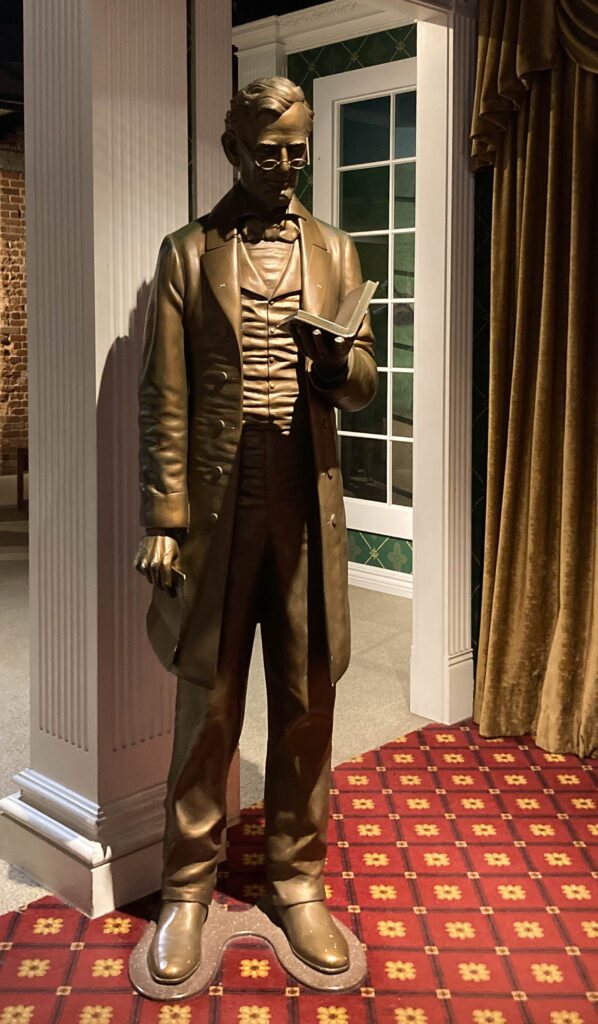
There’s an extensive museum underneath the theatre, with lots of exhibits on the Civil War and the assassination. There are also interesting artifacts, including the Deringer pistol that Booth used to shoot Lincoln.
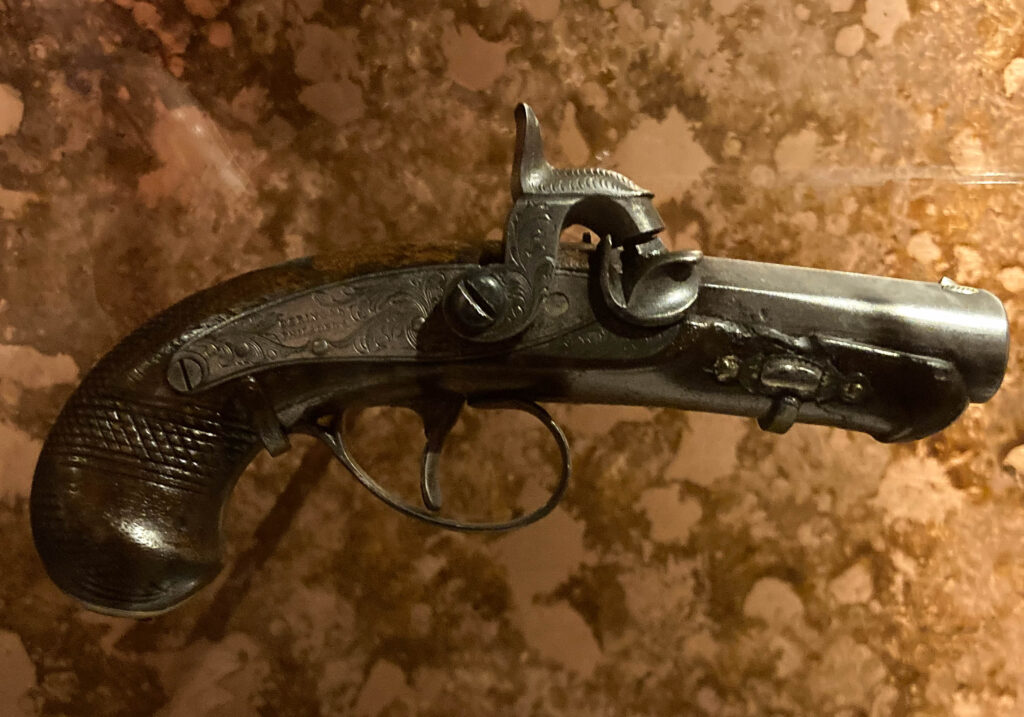
Next we went up to the theatre. Ford’s is still an active theatre; I’ve seen 1776 and A Christmas Carol there. And you can visit during the day, when there isn’t a performance playing, and see the bunting-draped, no-longer-used Presidential Box.
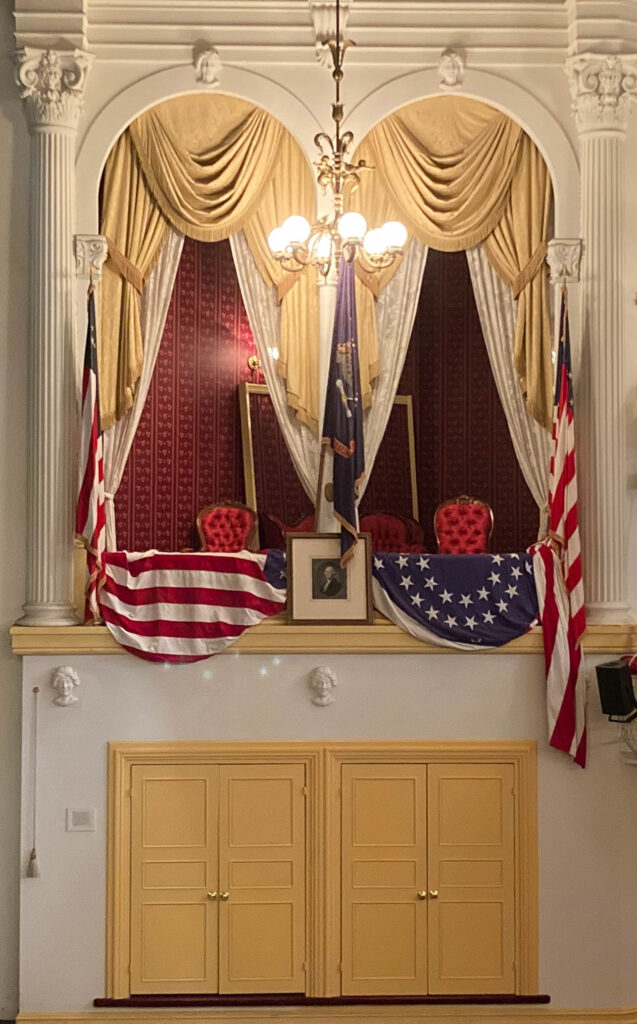
Petersen House
From the theatre, we walked across 10th Street to Petersen House, where President Lincoln died on April 15. You can see a few rooms furnished with period pieces. There is also an extensive museum with exhibits about John Wilkes Booth, the other conspirators, and Lincoln’s legacy.
Old Post Office Tower at the Waldorf Astoria
Our next stop was the Old Post Office Tower, one of the tallest structures in Washington.
The Old Post Office has a long and intriguing history. The Romanesque Revival building was completed in 1899.
It housed the U.S. Postal Department headquarters, the Washington, D.C., post office, and the Dead Letters Museum — which maintained a range of artifacts including a collection of undeliverable items, a set of Benjamin Franklin’s account books, and a lock of hair from Charles Guiteau, who assassinated President James Garfield.
Throughout much of the 20th century, the building housed offices belonging to government agencies, including the Federal Bureau of Investigation. But by the late 1970s, it was in need of major renovation.
President Ronald Reagan rededicated the renovated Old Post Office building in 1983. In addition to federal offices, it now housed restaurants and retail shops. It became known as the Old Post Office Pavilion and briefly appeared in the Cold War thriller No Way Out.
Shortly before becoming President, Donald Trump developed the Federal Triangle property into the Trump International Hotel Washington D.C., which opened in 2016 and closed in 2022. It is now the Waldorf Astoria Washington D.C., another one of my favorite hotels in the District.
The Tower houses ten change-ringing bells. They are replicas of the bells at Westminster Abbey in London and were cast at the Whitechapel Foundry, which also made the Liberty Bell. They ring officially on federal holidays and other days of national significance and for practice on Thursday evenings.
My companion and I rode elevators up to its 12th-storey observation deck and took in 360-degree views through wired windows. Sites you can spot include:
- the Capitol
- the Pentagon
- the White House
- the Supreme Court
- the Lincoln Memorial
- the Washington Monument
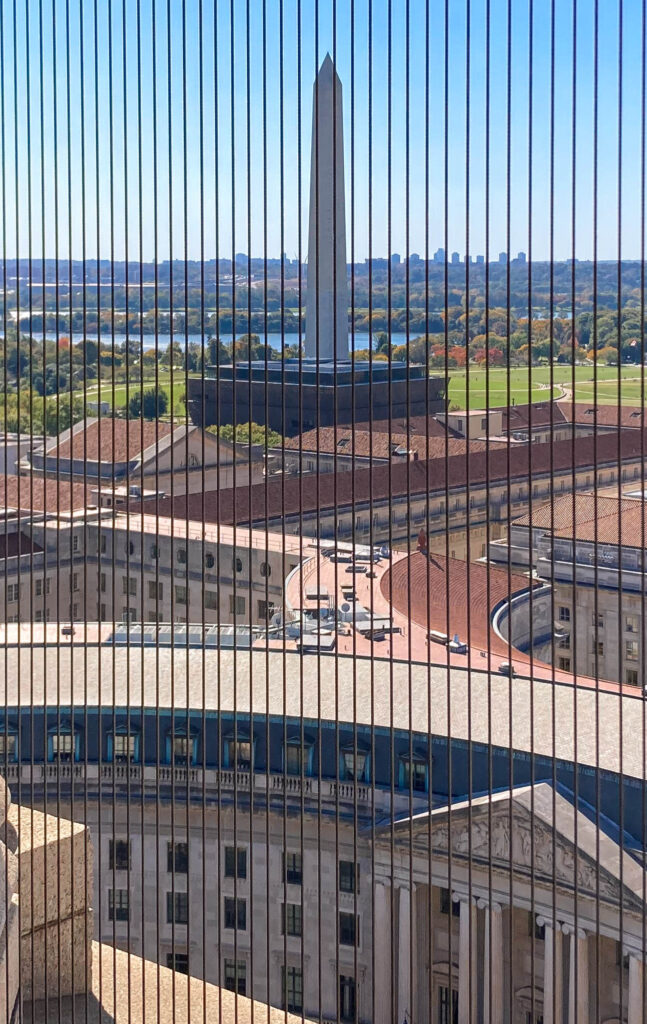
National Museum of American History
We headed back to the Mall and the National Museum of American History. We spent some time reliving the past in the “Entertainment Nation” exhibit which features lots of familiar pop-culture artifacts, including:
- the directional signpost from M*A*S*H
- the Bunkers’ chairs from All in the Family
- R2-D2 and C3PO costumes from Star Wars
- Dorothy’s ruby slippers from The Wizard of Oz
We also explored “The American Presidency” and “The First Ladies“, which features the presidents’ wives’ Inaugural ballgowns. We peeked into the kitchen from Julia Child‘s home in Cambridge, Massachusetts.
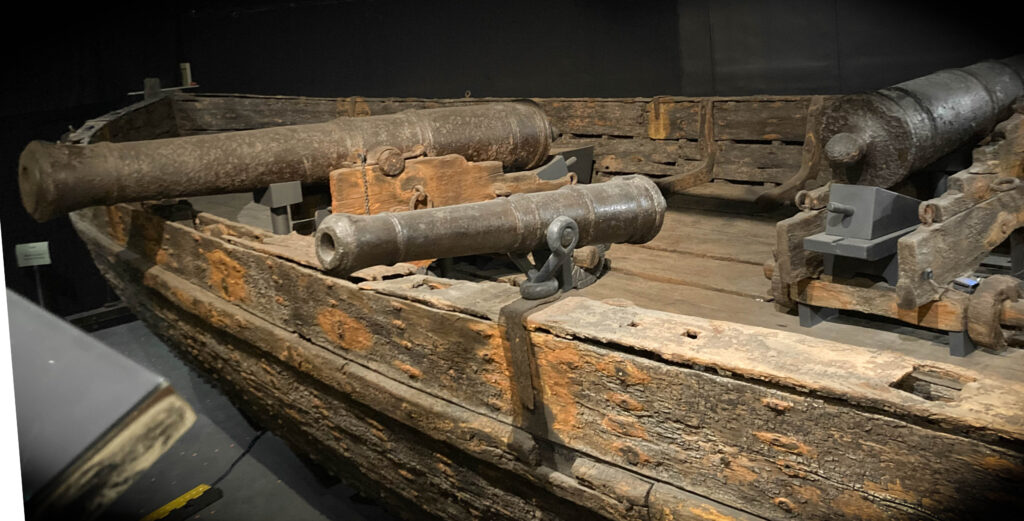
And we visited one of my favorite exhibits — the gunboat Philadelphia.
On October 11, 1776, nine American vessels, under the command of Brigadier General Benedict Arnold, fought a better-armed British fleet in a naval battle on Lake Champlain.
After three days of fire, the British had mostly destroyed the small American squadron and taken control of the beautiful, and strategic, body of water nestled among Vermont, New York, and Québec. Among the lost American vessels was the 54-foot gunboat Philadelphia, sunk by a 24-pound British cannonball.
In 1935, she was found at the bottom of the Lake, surprisingly intact. Today she’s on display at the Museum, along with the cannonball that sunk her.
Elephant & Castle
After this full day, we headed back toward Federal Triangle for dinner. Elephant & Castle is a “British pub” chain based in Canada. We were quickly seated at a booth featuring images of Admiral Horatio Nelson’s flagship Victory. We split an order of poutine, which was delicious with rich flavorful gravy.
I ordered the “wee pie flight”, basically sampler sizes of four pot pies:
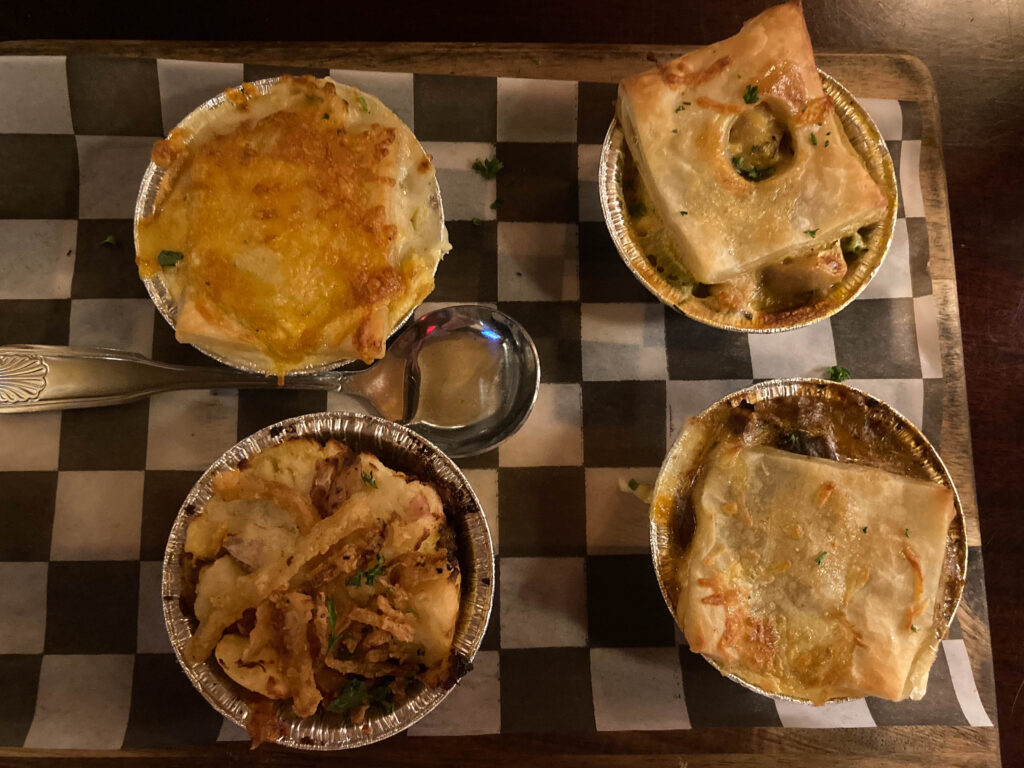
- steak & mushroom — mostly mushrooms, but the gravy was good
- chicken — good but fairly standard
- shepherd’s — good and topped with yummy mashed potatoes
- cheesy leek & potato — my favorite, rich and creamy
We split a bread pudding for dessert, which not surprisingly was also yummy.
It was Thursday, so upon stepping outside after dinner, we capped off our two-day adventure with the tintinnabulation of the Old Post Office Tower bells.
* * *
Continue your adventure in Washington, D.C.:

After my misspent youth as a wage worker, I’m having so much more fun as a blogger, helping other discerning travellers plan fun and fascinating journeys. Read more …
